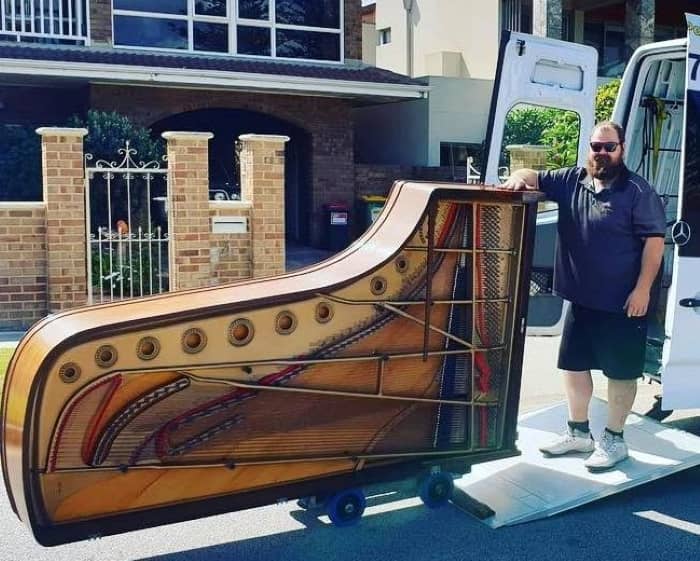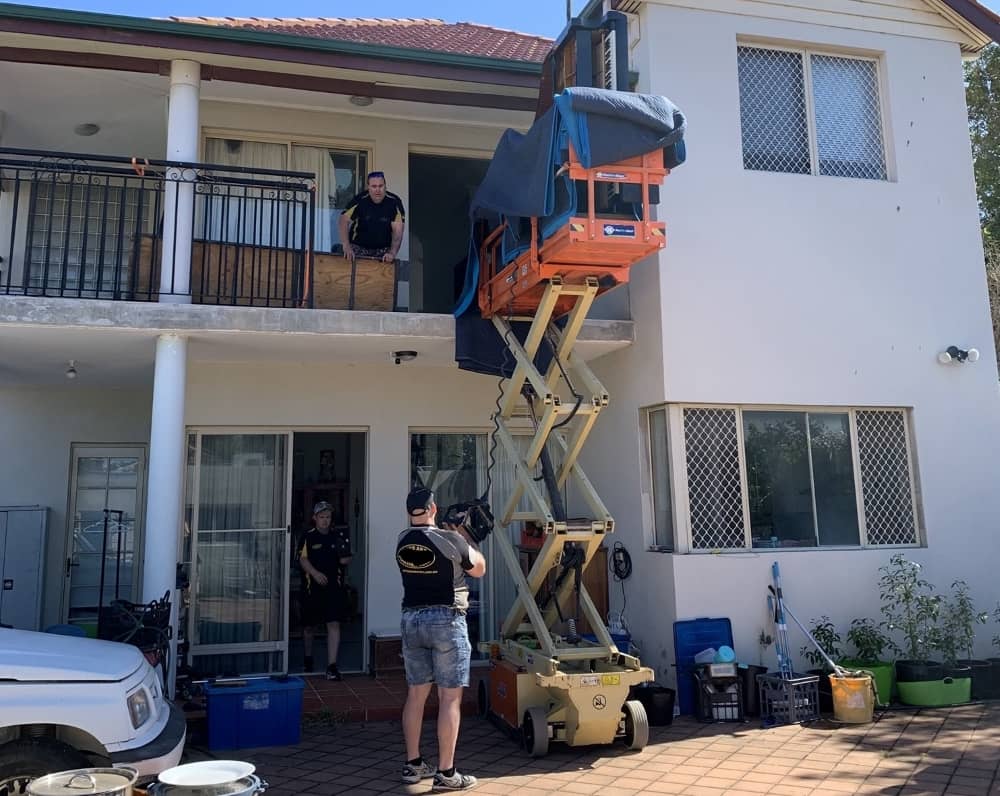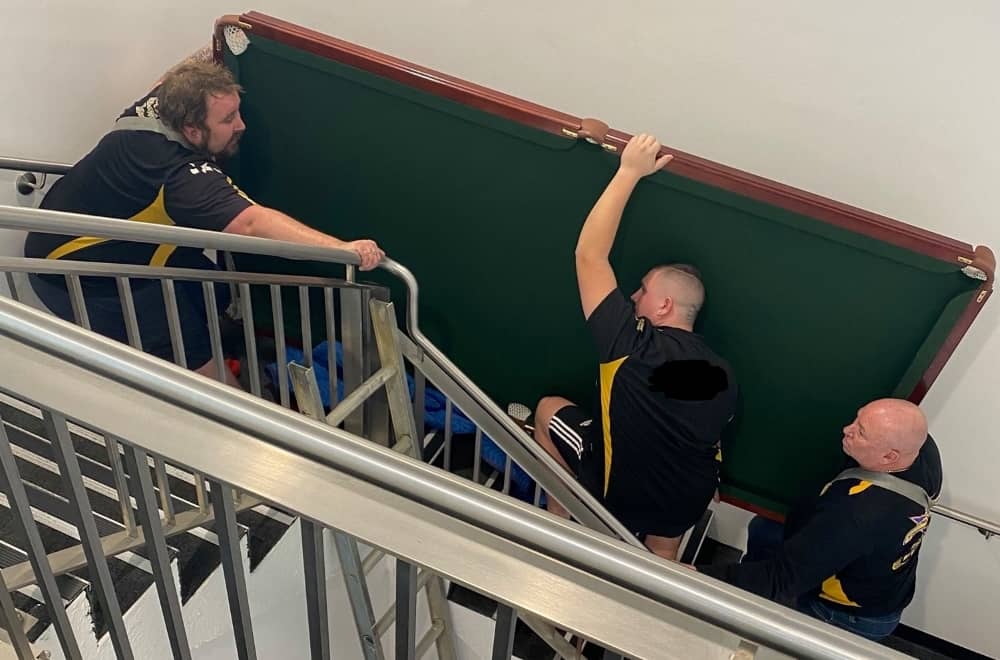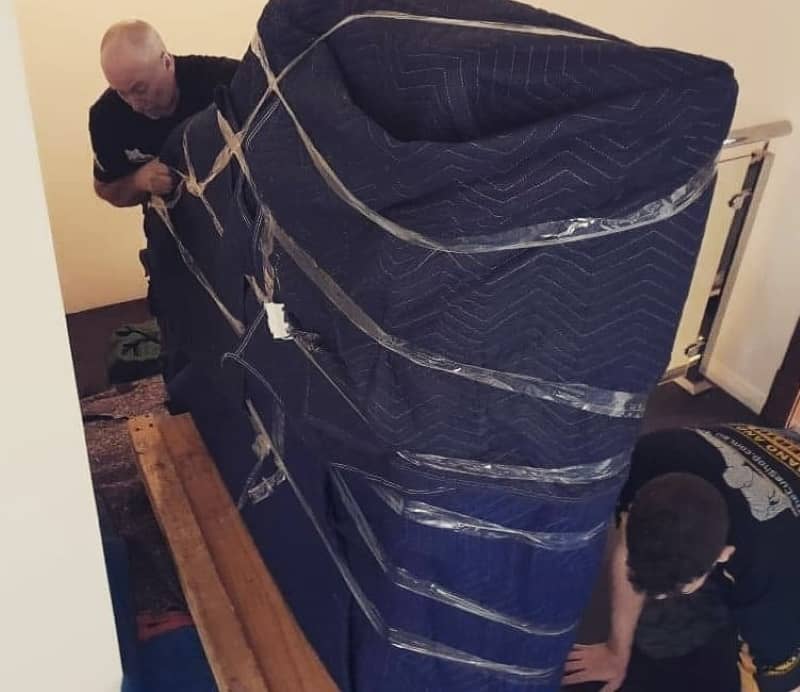Most people experience a degree of stress whenever possessions need moving. The stress multiplies when the items that need to be moved are especially large and heavy, such as pool tables or pianos.
While no one would expect that these objects are easy to move, there is a common misconception: that anyone with a few strong friends and a truck can move a piano.
Lifting is a part of many jobs, even those you might not expect. It causes a significant number of injuries each year.
The Australian Bureau of Statistics offers some illuminating statistics regarding work-related injuries and the chief cause of these mishaps.
- More than 550,000 workers reported work-related injuries or illnesses
- Lifting, pulling, or pushing was the most frequent cause of injury to those 550,000 employees
- 60 per cent of these employees had time off from their jobs because of the injuries
- 27 per cent of those injured in the workplace received workers compensation because of their injury
Top Three Professions Where Employees are Injured Most Frequently
It is not surprising to find that blue-collar jobs are at the top of the list for on-the-job injuries:
- Workers in the construction industry- 59 workers out of every 1000 employees
- Employees in the manufacturing sector- 58 workers out of every 1000 workers
- Health care workers- 55 employees out of every 1000 health care workers (technicians and tradies followed closely behind health care workers)
How Can Lifting Injuries be Prevented?
Understanding the physical mechanics involved in lifting is a good place to start when trying to prevent injuries. Additionally, educating workers as to the safest lifting techniques will also reduce the chances of lifting injuries.
Here are several tips to help workers lift safely:
- Plan the Lift – Look for the best way to hold the object and consider if you need assistance from a co-worker. Also, assess the safety of the area where you will lift. Remove any apparent hindrances to safe lifting and look for a place to rest the load midway to get a better grip if necessary.
- Place the Load Close to Your Waist – Ideally, the heaviest side of the object should be closest to your body to prevent any undue strain on your back.
- Assure Your Footing Is Stable – Ideally, you will stand with your feet apart and one foot slightly in front of the other. Plan on shifting your feet while lifting to maintain a steady footing
- If Possible, Hug the Load Against Your Body – By holding the object against your body, you will have better control during the lift. Keeping the weight this way also lightens the weight on your arms, shoulders, and upper back.
- Bend Your Back as Little as Possible – A slight bend at the beginning of the lift is acceptable. However, do not stoop over to pick up the load. Additionally, do not fully squat to lift the object.
- Do Not Bend or Twist– Avoid twisting or bending as you lift. Try to keep your shoulders level and facing in the same direction as your hips. Should you need to turn while lifting, use your feet to shift directions as required.
- Keep Your Head Up– Do not look down at the load once you have a good grip on it. Look ahead and do not twist your neck when you are lifting.
- Use Fluid Movements – Avoid jerking the load as this can lead to injuries as well as increase your difficulty holding the load securely.
- Adjust Your Positioning After You Lower the Object– If your load must be in a specific location, place the item that you are moving close to where it belongs and then slide it into the place it belongs.
- Know Your Limits– There is a substantial difference between the amount of weight you can lift and the amount and the amount of weight you can lift without exposing yourself to injury.
Limits on How Much an Employee Can Lift
While implementing a series of limits governing how much weight an employee can be asked to lift seems like a reasonable idea, the Occupational Health and Safety Regulations do not list specific weight or force limits.
OHS does protect to keep workers from being forced into situations where they must lift excessively heavy objects or exert extreme force to move an item.
According to guidelines, employers must identify any tasks that require hazardous manual handling and then take action to either remove or reduce the risks to employees.
OHS defines hazardous manual handling as a job that requires the use of force exerted by a person to lift, lower, push, pull, carry or otherwise move, hold or restrain any item that involves one or more of the following:
- Sustained or repeated application of force
- Continuous awkward posture
- Repetitive movements
- The need to apply a high force that involves a single or repetitive use of strength so great that a typical person in the workforce may have difficulty undertaking
- Exposure to constant vibrations
Reasons Not to Move a Piano Yourself
Even if you have plenty of well-intentioned helpers, there are several reasons that inexperienced people should not try to move pianos:
- Pianos are not pieces of furniture – Whether you play your piano daily or use it as a focal point of your home, your piano is a musical instrument that is delicate and precisely designed. They can tip the scales at several hundred kilograms and have different components that need care, such as pedals, wires, and keys. If you have a grand piano, it will need taken apart to move and then reassembled when it arrives at its new location. Improper moving can irreparably damage a piano as well.
- Need special moving equipment – Professional piano movers have various equipment such as skid boards and piano dollies. You will need special tools to prepare a piano for moving, and a proper truck is a must.
- Oddly shaped and uneven weight – In addition to being exceptionally heavy, the odd shape of pianos combined with an uneven distribution of weight makes moving a piano a potentially hazardous project. Balancing the back heavyweight of a piano is tough even if you know what to expect. The last thing you want on moving day is a big heavy surprise.
- Sustain injuries – Moving a piano is about know-how and skills more than brawn and brute strength. Powerful people can have severe injuries because of moving a piano.
- Damage surroundings – When moving a piano, all of your surroundings are at risk for damage. If you have no experience moving a piano, the question is not will something become damaged, but rather what will be damaged and how badly.
*Case Study One*
Even Professional Piano Movers Face Danger on the Job
Out of all the reasons to hire pros to move your piano, real on the job experiences of the hazards involved with piano moving are the most compelling.
Robert is a professional piano mover with over 20 years of experience in the industry. He was involved in a severe accident while moving a piano, and it nearly cost him his life.
Robert and his co-worker had a job moving a piano up a steep flight of stairs. Robert was below the piano pushing, and his partner was above hoisting the piano up the stairs.
The pair were one step away from the top when Robert lost his footing and went tumbling down the staircase. Because of the extreme weight of the piano, Robert’s co-worker could not hold it, and it was crashing down the stairs after Robert.
At the bottom of the staircase, Robert slammed into the wall and braced himself for what would surely be a fatal impact. However, the top of the piano flipped, and it crashed into the wall just above Robert.
Even though Robert cracked his hip during the accident and suffered a painful recovery, he felt he was lucky to be alive after the ordeal.
*Case Study Two*
Sometimes the Piano Is the Casualty
Not every piano moving accident has a dramatic brush with death central to the story.
Brian is a piano moving specialist with over 25 years of experience moving pianos in and around West London. He and his co-worker were in the process of unloading a Bösendorfer grand piano from their lorry. The piano tipped, and the men were unable to restrain it. The piano fell over a bank and landed on granite 4 metres below.
The fall left the piano smashed beyond repair. Even though the company had adequate insurance, the piano held great sentimental value to its owner.
It is always better to stay safe and free from injuries. Remember, even though we specialise in piano and pool table moving, we are well equipped to move other heavy objects such as,
- Couches, chairs, and other heavy furniture
- Fridges and freezers
- Gym equipment
- Heavy outdoor items
- Safes
- Statues
- Water features
If you are not sure if the Piano Removalists can move your items, feel free to contact us for more information. We are fully insured and will put our 35 plus years of experience to work for you.





